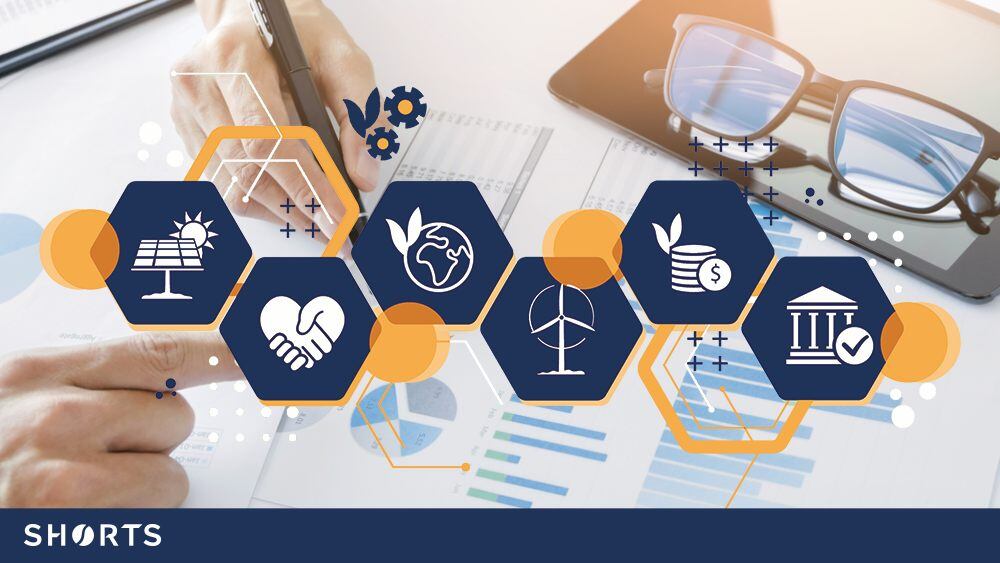
Environmental, Social and Governance (ESG) performance is under the spotlight for the UK business community, and for good reason. Effectively measuring and reporting on ESG efforts demonstrates your company’s commitment to sustainability and positive social impact, which can significantly enhance its reputation.
Robust ESG reporting can bring several benefits, including attracting investors, recruiting the best people, and mitigating risks. So, how can a business do this effectively?
What are ESG metrics?
ESG metrics are qualitative and quantitative measurements demonstrating a company’s performance against key environmental, social, and governance factors. They are essential for gathering the correct data to understand the company’s performance in these areas.
Examples of ESG metrics
ESG is divided into three categories: Environmental, Social, and Governance. Depending on your company’s industry and operations, you should consider a wide range of different metrics.
Environmental metrics
Environmental (E) metrics focus on a company's impact (both direct and indirect) on the natural world, both locally and globally.
Metric |
How it can be measured |
| Greenhouse gas emissions | Identify where emissions come from (e.g., energy use, waste), collect data on activities, convert data into greenhouse gas amounts using emission factors, and add up totals. |
| Energy consumption | Install energy meters to monitor electricity and gas usage. Analyse utility bills for consumption patterns. Track energy use by equipment or department. Use data to identify efficiency opportunities and reduce costs. |
| Water usage | Install water meters to track usage—Analyse water bills for consumption patterns. Identify water-intensive processes. Implement water-saving measures (e.g., leak detection, efficient fixtures). Monitor water quality for potential issues. |
| Waste generation | Weigh and categorise waste regularly—track waste generation by type and department. Calculate recycling and disposal rates. Identify waste reduction opportunities. Use data to set reduction targets. |
| Biodiversity impact | Conduct biodiversity assessments on land and water areas used. Monitor plant and animal species populations. Assess the impact of operations on habitats. Develop conservation plans. Track progress in biodiversity restoration. |
Social metrics
Social (S) metrics assess a company's relationship with its employees, customers, stakeholders and the community.
Metric |
How it can be measured |
| Employee turnover rate | Calculate the number of employees who leave a company during a specific period. Divide this number by the average number of employees during the same period. Multiply by 100 to get the turnover rate percentage. |
| Diversity and inclusion | Measure diversity by tracking and recording demographics (gender, race, ethnicity, age, disability). Assess inclusion through employee surveys, exit interviews, promotion rates, and employee resource group participation. |
| Customer satisfaction | Conduct customer surveys, analyse feedback, calculate Net Promoter Score (NPS), track customer complaints and returns, and monitor social media sentiment. |
| Supply chain ethics | Conduct supplier audits, verify labour standards, assess environmental impact, track fair trade certifications, monitor ethical sourcing practices, and analyse human rights compliance. |
| Community investment | Track monetary donations, volunteer hours, employee giving programs, sponsorships, community partnerships, and social impact projects. |
Governance metrics
Governance (G) metrics evaluate a company's leadership, management structure, shareholder rights, and other processes, functions and communications.
Metric |
How it can be measured |
| Board diversity | Analyse board members by gender, race, ethnicity, age, experience, and education. Calculate percentages for each category. Compare to industry benchmarks and diversity goals. |
| Executive compensation | Inspect executive salaries, bonuses, stock options, and benefits. Compare compensation packages to company performance metrics. Calculate pay ratios between executive and average employee pay. |
| Anti-corruption measures | Track incidents, complaints, and bribery, fraud, or misconduct-related investigations. Assess compliance with anti-corruption policies and laws. Monitor employee training completion rates. Evaluate risk assessments and mitigation plans. |
| Risk management practices | Assess risk identification and assessment processes, evaluate risk mitigation plans, measure incident response effectiveness, track insurance coverage, review compliance with regulations, and analyse financial impacts of risks. |
| Data privacy and security | Assess data protection policies, employee training completion rates, incident response times, system vulnerability assessments, encryption usage, access controls, and compliance with regulations. |
What does an ESG report look like?
Unlike annual accounts and financial statements, there is no standardised format for ESG reports. Instead, there are best practices.
An easy starting point is to align ESG reports with established frameworks, like the Task Force on Climate-related Financial Disclosures (TCFD). This provides a solid structure and familiarity for investors experienced in reviewing ESG reports for similar companies.
ESG report best practices
- The report should be clear, concise, and consistent in its presentation of information.
- It should focus on the ESG factors most relevant to the company's business and stakeholders.
- All data used should be accurate, reliable and verifiable.
- It should clearly disclose and explain the methods used to collect and calculate the ESG data presented.
- It should also be visually pleasing and easy to understand, incorporating graphs and other visual elements.
Sections to include
While not mandatory, the following sections may be included in an ESG report:
- Executive summary and overview of ESG performance, including key achievements
- A company profile outlining the company industry, operations and leadership
- A materiality assessment, which explains how it identifies and prioritises ESG issues
- Details on the company’s performance against its ESG targets
- Information on how the company is engaging with its stakeholders on ESG issues
- Outline of the company’s governance, structure and responsibilities
Should you have a dedicated ESG reporting system?
Investors are increasingly scrutinising companies' ESG data, whether they are existing investments or future ones. They are, therefore, demanding as much accuracy and reliability as possible.
The problem is that ESG data is often inconsistent, housed in various systems, and challenging to manage, especially for large businesses. A dedicated ESG reporting system can efficiently manage ESG data, similar to how IT, accounting, and HR systems handle their respective data.
Accuracy, automation, and observability are crucial for reliable ESG reports. ESG reporting software can help by automating data capture, providing the necessary access, and removing issues relating to user error.
How do companies submit their ESG reports?
UK companies do not typically submit ESG reports to a central body as they do with annual financial statements and accounts. Instead, they often publish them on their own websites or through other public channels.
Some companies, such as ones in specific sectors, may be required to submit ESG-related information to regulatory bodies like the Financial Conduct Authority (FCA).
Companies seeking investment may choose to submit their ESG reports to public databases used by investors. This can improve their visibility and help them impress would-be investors.

Matthew Lewis
Matthew is a Senior Audit & Accounts Manager at Shorts. He is a Chartered Certified Accountant with experience with Big 4 and Top 10 firms. His experience includes audit and financial reporting, across a wide range of businesses and sectors.
View my articlesTags: ESG
